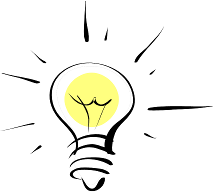Welcome Parents!
So now that you know your child's learning style, what do you do next? You have come to the right place for resources and tools for specific learning style preferences. Listed below are some extra tips, printable resources & instructions as well as some recommended products that you can buy online. When child is given the study tools that are designed for his or her individual learning style, they are not only getting the best set-up for success, but they are also affirmed in their uniqueness and empowered to take more ownership in their learning process.
Non-Conforming Learners
Oftentimes non-conforming learners are mistaken for rebellious or difficult-to-teach students. They need to have a decision in the learning process and this can make things difficult for a student who must follow a set schedule and learn in a structured environment. However, it is easy to teach non-conforming learners if the teacher or parent follows three tips:
1. Relate to the student in a collegial manner. Speak to and relate to this student as person who is on the same level. Give them respect as you work with them.
2. Give the student choices in how to meet the objective. It will greatly help the student even if the teacher can only offer them the opportunity to choose the order of assignment, (for example, which subject to learn first or which problem to start on first). When a non-conformer has choice in learning, his/her mind becomes more alert and efficient.
3. Give the student good reasons for completing the assignment or allow the student to come up with a good rational him/herself.
Non-conforming students are wired to lead and will perform much better when given the opportunity to learn in these ways.
Kinesthetic Learners
What does one do with a student who must move large body muscles to concentrate?!! Will you ever get such a child to sit still and "pay attention"?!! And herein lies the discrepancy... when a kinesthetic learner is sitting still he or she is often struggling to "pay attention" because of the "sitting still". Unfortunately, kinesthetic learners are more often labeled as having ADHD, more prone to misbehave in a formal classroom setting, and more at risk for falling behind academically. But consider this: the majority of humankind has been learning in a formal classroom setting for less than 200 years. Up until relatively recently, kinesthetic learning was the main mode of acquiring life skills. The kinesthetic mode is a natural and valid way to learn and is even the first preference for a large percentage of highly intelligent adults.
So how does one teach kinesthetic learners? An important thing to remember is that they do not have to learn in this mode all of the time. Everyone has secondary learning preferences, and while some main preferences are stronger than others, each person can learn through other means than their main modality. We encourage teachers and parents to find these students' secondary preference (auditory, visual, tactual or verbal kinesthetic) and when the student cannot move around she can at least be taught with that secondary preference in mind. That being said, a kinesthetic learner is at his highest level of concentration when moving the large muscles. To accommodate this requires creativity on the teacher's part. If the student can walk, jump, or throw something while concentrating he will absorb more. If his secondary perceptual preference is auditory, we recommend putting information and instruction on a listening device and allowing the student to walk while listening. Or, if her secondary preference is visual, a set of index cards with pictures and learning instructions can be carried around while moving. We also highly recommend an inflated disc, sold in our Learning Styles Resource Store (powered by Amazon) on which your student may sit when having to be stationary while concentrating.
Kinesthetic learners will have a natural tendency to move around, bounce their legs, swing their arms, etc... Now that you know that your student needs to move while concentrating you will hopefully encourage any of these activities when they are studying the most difficult concepts. When something is difficult, there are some great ways to help the kinesthetic learner. Offer a ball to bounce or throw against a wall or into a basket. Allow the student to pace or jump up and down while learning. Let them study on a stationary bicycle if available. Give them any opportunity you can find for them to move while concentrating.





